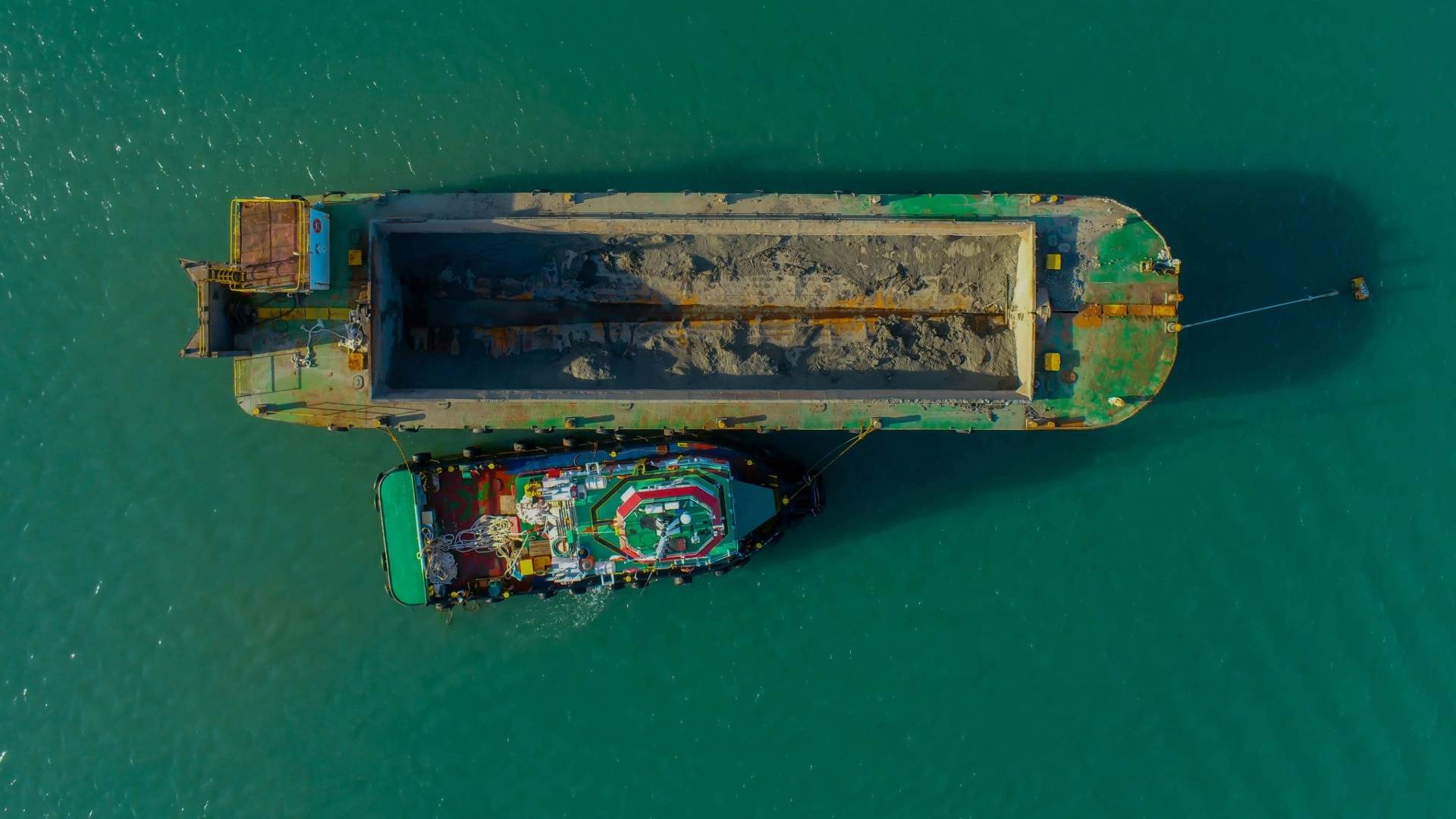Introduction
China has once again demonstrated its technological leadership in maritime engineering with the launch of two ultra-large grab suction dredgers—“Tongjun” and “Junguang.” Both vessels, unveiled by China Communications Construction Company (CCCC), represent the next generation of dredging equipment, combining intelligence, eco-friendliness, and sheer scale.
With a capacity of 35,000 cubic meters each, these vessels are not only the largest of their kind but also set new global benchmarks for efficiency and sustainability in port dredging, waterway maintenance, and deep-sea engineering.
Understanding the Importance of Dredging
At its core, dredging is the process of excavating and removing sediments, sand, or gravel from the seabed, rivers, or harbors. It plays a crucial role in maintaining navigation channels, preventing flooding, supporting port expansion, and enabling offshore development. Without consistent dredging, waterways would become shallow, making it impossible for large ships to dock, and trade routes would be severely disrupted.
Port dredging is particularly vital for global commerce. As international trade grows and ships become larger, ports must be deepened and maintained to accommodate them. China’s launch of these advanced dredgers demonstrates its determination to maintain its position in the global maritime economy.
Features of the Tongjun and Junguang
The Tongjun and Junguang dredgers are equipped with cutting-edge technology that sets them apart from traditional vessels. Each has a length of 198 meters, a beam of 38.5 meters, and a depth of 18 meters, allowing them to operate in challenging environments.
Key capabilities include:
- Deep dredging: With the ability to reach depths of up to 120 meters, these vessels can work in both shallow harbors and deep-sea environments.
- High soil penetration: Advanced grab suction systems allow for the efficient excavation of dense seabed materials.
- Eco-friendly operation: Designed to minimize turbidity and environmental impact, they reflect a growing shift toward sustainable dredging.
- Intelligent systems: Automated monitoring and control systems ensure precision, efficiency, and safety during operations.
- Versatile applications: Beyond port dredging, they can be used for land reclamation, deep-sea mining, trench excavation, and laying subsea pipelines.
These capabilities mean the vessels are not only suited for domestic projects but are also competitive on the international stage.
Dredging and Its Role in Port Development
Global trade relies heavily on efficient and modern ports. As container ships grow larger—some exceeding 400 meters in length—ports worldwide must undertake extensive port dredging to deepen their channels. Without such dredging, ships carrying thousands of containers would be unable to dock, resulting in delays, congestion, and economic losses.
China’s investment in mega dredgers directly supports its Belt and Road Initiative, enabling Chinese companies to undertake major dredging projects worldwide. From Africa to Southeast Asia, China has been a leading partner in building and maintaining deep-water ports, and vessels like Tongjun and Junguang further strengthen this capacity.
Environmental Considerations in Modern Dredging
Traditional dredging methods often led to environmental challenges, including high turbidity, disruption of marine ecosystems, and improper disposal of dredged material. However, the new generation of dredgers prioritizes eco-friendly practices.
The Tongjun and Junguang are designed with advanced systems that reduce sediment resuspension, improve water quality, and ensure safer relocation of dredged materials. This marks a significant step forward in making dredging projects compatible with global environmental standards, particularly in sensitive coastal and marine zones.
Economic and Strategic Impact
The launch of these dredgers has both economic and strategic implications.
- Boosting Trade Efficiency: By ensuring ports remain deep and navigable, China strengthens its trade routes and secures its role as a global shipping hub.
- Expanding Global Influence: With advanced port dredging technology, Chinese companies can win more international contracts for harbor and land reclamation projects.
- Supporting Offshore Development: Beyond ports, the vessels are designed for offshore sand mining, gravel bed construction, and subsea pipeline installation—industries essential for energy security and marine infrastructure.
- Job Creation and Technology Export: The rise of intelligent, eco-friendly dredging equipment also creates opportunities for training, knowledge transfer, and equipment export.
A Step Toward Global Leadership in Dredging
By simultaneously launching the Tongjun and Junguang, China is signaling its intention to lead in maritime infrastructure technology. These vessels are not only the largest grab suction dredgers in the world but also among the most advanced in their class. Their combination of intelligence, sustainability, and capacity gives China a competitive edge in the global dredging market.
As ports expand, waterways deepen, and offshore projects grow more complex, such innovative dredgers will be in high demand. China’s proactive investment in such equipment ensures it remains at the forefront of shaping the future of global maritime trade and infrastructure.
Conclusion
The successful launch of the Tongjun and Junguang dredgers is a milestone in modern maritime engineering. These intelligent, eco-friendly, and ultra-large vessels redefine what is possible in dredging, from port dredging and waterway maintenance to deep-sea mining and land reclamation.
By combining technological innovation with environmental responsibility, China is not only addressing its domestic needs but also positioning itself as a global leader in dredging solutions. For the international community, the message is clear: the future of dredging is bigger, smarter, and greener.
